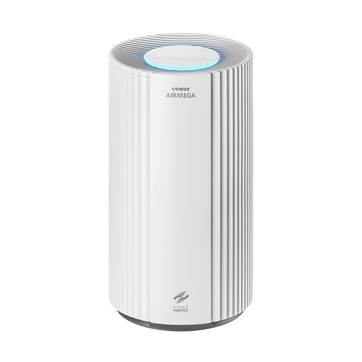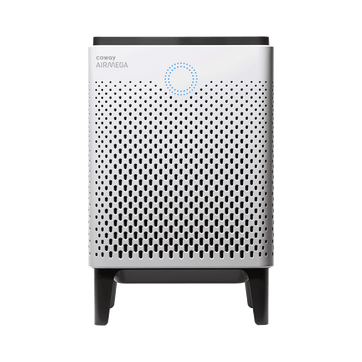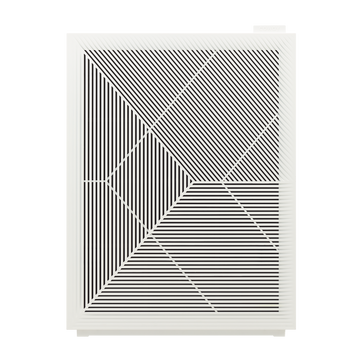
7 seasonal allergies: the year-round round-up
Over the past year, we’ve covered a range of seasonal allergies when they tend to hit allergy sufferers the hardest. Looking back, we’ve covered a lot of ground. Here’s a review of the allergy triggers that pop up throughout the year, and what they mean for suffers.
Summer mould and ragweed
Late summer and early fall offer a double whammy for allergy sufferers. On the one hand, because mould thrives in warm and wet environments, the stuff tends to incubate in and around your home. But also, it’s when ragweed allergies start kicking in. Ragweed pollen is transported by the wind, causing further misery for allergy-sufferers.
Fall mould
Cooler weather provides another opportunity for mould and fungi to proliferate. Falling leaves, when mixed with moisture from morning dew or rainfall, can become a breeding ground for the material. Then, when you rake your lawn, you are also likely to release spores into the air. As with the summer variety, any place prone to moisture, like the kitchen, bathroom, and basement, are likely spots for mould.
Christmas trees
Sure, Christmas trees are festive, beautiful, and fresh-smelling. But they also carry multiple microscopic mould spores, which can lead to asthma and allergic reactions. And that pesky mould is likely to increase while the tree is in your home. There’s even a term for it: Christmas Tree Syndrome.
Winter dust
In the winter, when you crank up the heat, you’re likely to stir up dust in your home. And that can trigger allergic reactions to dust mites, which typically feed on skin flakes from humans and animals. Major causes of dust mite reactions are digestive enzymes from the mite’s gut that exist in its feces and exoskeleton. They can be found anywhere from wall-to-wall carpeting to bedding.
Winter-spring tree pollen
Sometime around March, certain trees start releasing pollen that can be carried in the wind for miles, even into your home, triggering allergy symptoms. The particular culprits are trees with fine, powdery, barely visible pollen that can be easily blown away by a strong breeze. Breathing in just a small amount is enough to cause a reaction.
Spring flower pollen
For people who suffer from allergies triggered by pollen, spring-time flowers can be a mixed blessing. The reason: Plants with flowers need pollination to form new seeds that will, in turn, grow into new plants. But that pollen can also cause allergic reactions, especially when spread by the wind.
Spring and summer grass pollen
In many parts of the U.S., seasonal allergies are triggered by grasses as they start to release pollen, which can be carried by the wind for miles. While only a handful of grass species cause serious allergies, you may be allergic to just one type of grass pollen, or to many.
How can you protect yourself against allergy triggers? One effective method is to use a smart air purifier with a HEPA filter, like Airmega, that can help you keep the air clean in any season.
Disclaimers
1Coway air purifiers has been proven to trap dust, pollen, dander, viruses and bacteria in the air based on KCL (Korea Conformity Laboratories) testing.They have been tested in a 30㎥ size chamber according to the Korea Air Cleaning Association standard (SPS-KACA 002-132:2022 Modified) to measure the 0.01㎛ size of particle removal rate. It was tested on maximum airflow speed in normal room temperature and humidity conditions. The performance may vary in the actual living environment of customers.
→ Tested with Airmega Aim, 150, 160, AP-1216L, AP-1512HH, AP-1512HHS, 200M, Icon, IconS, 230, 240, 250, 250 Art, 250S, 300, 300S, 400, 400S, ProX
299.97% of viruses, bacteria, fungi and pollen were verified to be removed from the air for Coway air purifiers which have Green True HEPA™ filter applied based on the Japan Food Research Laboratories(JFRL) testing according to JEM 1467 standard.
→ Tested with Coway Airmega AP-1512HH, AP-1512HHS, 250, 250 Art, 250S, 300, 300S, 400, 400S
→ All tested by JFRL and received above result within below time.
All tested by JFRL and received above result within below time.
- Virus: Tested with Escherichia coli phage ΦX174 NBRC 103405, 60 minutes
- Bacteria: Tested with Staphylococcus epidermidis NBRC 12993, 60 minutes
- Fungi/Mold: Tested with Penicillium citrinum NBRC 6352, 60 minutes
- Pollen: Tested with Cedar Pollen extract, 60 minutes
3Aerosol test conducted in a Biosafety level 3 laboratory with two Coway air purifier models, Coway Airmega 250 and 400 for removal of SARS-CoV-2 Aerosol by US based MRI Global, a not-for-profit laboratory and partner of US Department of Defense. The test was conducted in a 13.1ft3 chamber. Virus was aerosolized for 15 minutes and the product was turned on high for 2 minutes. Result showed each product effectively removed over 99.98% of the SARS-CoV-2 in 2 minutes. This is a result from a laboratory experiment condition and result may vary in different conditions. This result does not imply it kills SARS-CoV-2 or prevents the transmission of Covid-19. Coway Airmega 250S and 400S are identical to the tested models and has equal performance with an additional mobile connectivity function.
4The concentration of ammonia, acetaldehyde and acetic acid were proven to be removed within 30 minutes by FCG Research Institute, Inc. Human Life Science Lab. It is not a demonstration result in the actual use space. Not all odors and gases may be supported. → Tested with Coway Airmega 150, 160, AP-1512HH, AP-1512HHS, 400, 400S
5The coverage area of the air purifier is based on an area where the air cleaner can make two air changes per hour (ACPH). An air change per hour translates to how many times an air purifier can clean an area, assuming the height of a ceiling to be 8 ft, in one hour. Therefore ** means two air changes per hour means that the cleaner can clean the area once every 30 minutes and * means air changes per hour means that the air purifier can clean the area once every 60 minutes.
10Terms and conditions apply. Discounts, including promotions, coupons, bundle discount and subscription discount, cannot be stacked on top of other coupons. During promotional periods, discount codes will not be able to be applied to orders. Promo codes may apply to products only—filters, accessories, and new products within 3 months of the release date are not included.




















